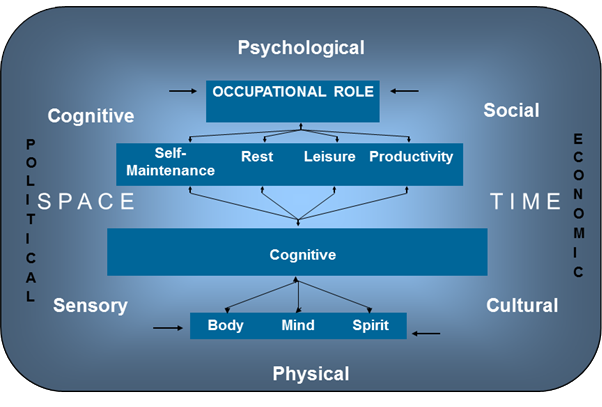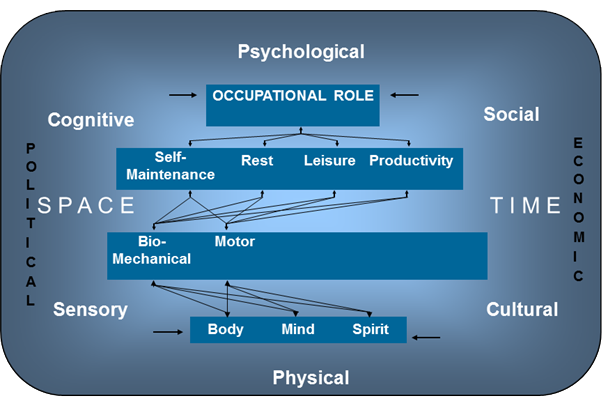Assessing occupational performance using the OPM(A) requires that therapists consider three primary dimensions of performance: 1) how well people are able to carry out needed and desired occupations (routines and tasks) in real world contexts where performance would typically occur, 2) identifying the person capacity / strategy application reasons for difficulties encountered, and 3) the influence of the multi-faceted context on performance. Several ecologically valid tools and methods have been developed in line with this perspective. Each of the illustrations below represents the place of a specific component of human capacity within the OPM(A) and the line of interaction between this component and remaining dimensions of occupational performance. Ecologically valid assessments and methods described in this section emanate from these frameworks.
Ranka, J. (2014). Description of OPM(A) assessments. Retrieved (insert date) from www.occupationalperformance.com/assessments/

Cognitive ComponentPerceive, Recall, Plan & Perform (PRPP) System of Task Analysis : Assessment |

Biomechanical and Motor Component |

Sensory Component |

Other Component |
